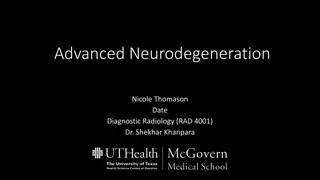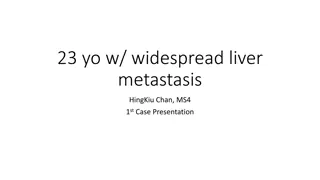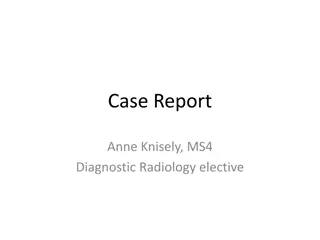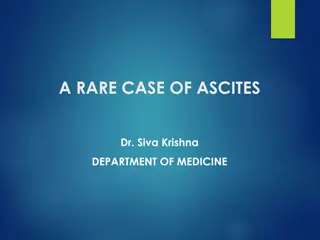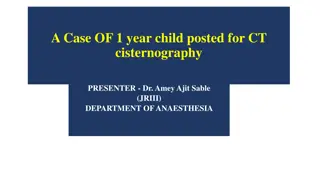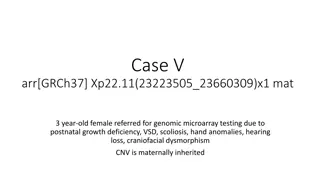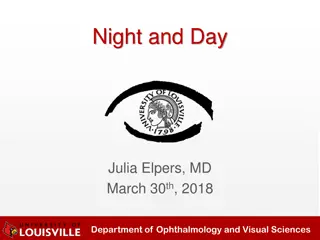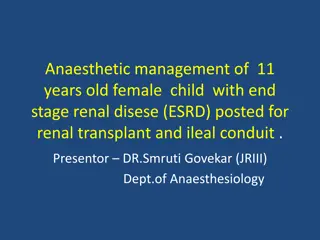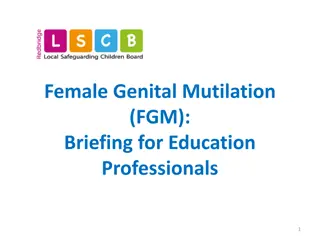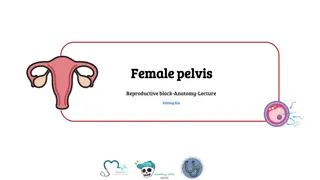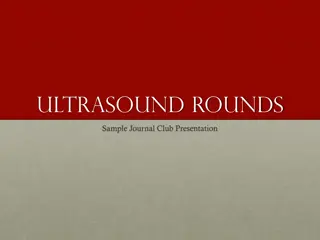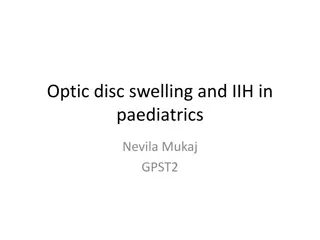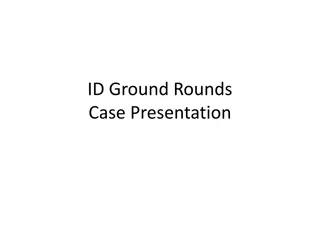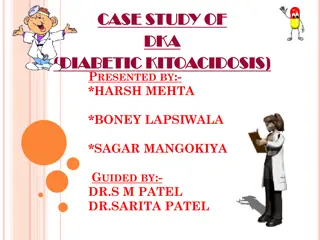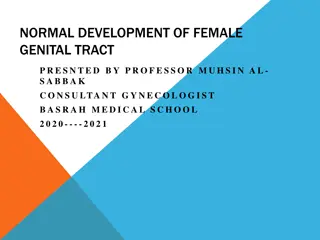Uncommon Complication in a 5-Year-Old Female Child: A Case Study
A 5-year-old female child presented with high-grade continuous fever, abdominal pain, headache, malaise, and loss of appetite. Initial investigations revealed positive findings for Scrub IGM ELISA. Treatment with oral Doxycycline and platelet transfusion led to the resolution of symptoms. However, on day 8, the child exhibited periorbital puffiness and other concerning symptoms. Further examination and test results indicated severe anisopoikilocytosis and other abnormalities, necessitating continued monitoring and intervention.
Download Presentation

Please find below an Image/Link to download the presentation.
The content on the website is provided AS IS for your information and personal use only. It may not be sold, licensed, or shared on other websites without obtaining consent from the author. Download presentation by click this link. If you encounter any issues during the download, it is possible that the publisher has removed the file from their server.
E N D
Presentation Transcript
COMMON BUG: COMMON BUG: UNCOMMON UNCOMMON COMPLICATION COMPLICATION By Shreyasi Das 3rdyear PGT NBMCH
CASE PROFILE CASE PROFILE 5 years old female child presented with complaints of High grade continuous fever Pain abdomen 7 days Headache, malaise and loss of appetite for the last 5 days. No any major illness in the past. Only child of her parents, born out of non-consanguinous marriage No significant birth history. Parents were healthy Family lived in a pukka house with tube well as water supply Socio-economic status-Lower middle class according to Kuppuswamy scale 2019.
EXAMINATION EXAMINATION Conscious and alert ,but irritable Temp- 103oF B.P.- 92/64 mm of Hg HR- 110/min Pallor-Present No cyanosis, icterus, clubbing or edema Lymph nodes -NP Heart sounds audible. No murmur or added sounds. Respiratory rate- 20/min Chest- B/L clear with VBS Abdomen- mildly distended and tender, Liver span7 cm, spleen not palpable
INITIAL INVESTIGATIONS INITIAL INVESTIGATIONS CBC Test Result Hemoglobin Total WBC count Platelets 7.8g/dl 7600/cumm 20,000/cumm URINE R/E Test Result Absent Nil Albumin Red blood cells Blood C/S and Urine C/S- No growth
Test Result Dengue ELISA NS1 Ag Non-reactive Dengue IgM ELISA Non-reactive Malarial Parasite Dual Antigen Negative Scrub IGM ELISA POSITIVE 4.19
TREATMENT AND FURTHER TREATMENT AND FURTHER PROBLEMS PROBLEMS Oral Doxycycline started along with platelet transfusion Day 2 Fever subsided Day 3 Abdominal swelling reduced Day 5 Patient was clinically well
EXAMINATION On Day 8 EXAMINATION On Day 8 Child was alert but irritable with periorbital puffiness. Temperature- 98oF No pallor, cyanosis or icterus. Chest- B/L percussion and mild intercostal suction on inspiration. Heart sounds- muffled. Abdomen-Free fluid ++ B/L pedal edema B.P.- 118/80 mm of Hg No lymphadenopathy splenomegaly. dullness on or
Test Result Hemoglobin 8.9 g/dl (RBC normocytic and normochromic with severe anisopoikilocytosis) 11,700/cumm 1,00,000/cumm 48mg/dl 0.6mg/dl 306mg/dl 360mg/dl 2 gm/dl WNL Non-reactive Non-reactive Non-reactive Total WBC count Platelets Urea Creatinine Triglycerides Serum Cholesterol Albumin PT, APTT, INR HIV HBsAg Anti-HCV antibody
Urine R/E & M/E Test Result 3+ 3-4/hpf 2-5/lpf Albumin Pus cells Granular casts Albumin creatinine ratio 906.8 mcg/mg creatinine USG of whole abdomen- Gross acsites with right sided pleural effusion Echocardiography- 3mm pericardial effusion, mostly posteriorly and mild pulmonary arterial hypertension.
Started on prednisolone as first episode of Nephrotic Syndrome Didn t respond at 4 weeks and showed presence of microscopic hematuria and persistent hypertension Underwent kidney biopsy
Kidney biopsy findings Kidney biopsy findings Test Result Light microscopy findings Total 8 glomeruli seen. 3 glomeruli segmentally sclerosed with adhesion. Rest 5 show mild mesangial matrix expansion with focal hypercellularity. Tubules- acute tubular injury with RBC casts. Intratubular polymorphonuclear cells noted. Immunoflourescence IgM shows podocytic uptake. IgG, IgA, C1q, kappa, lambda show no immune deposits. Final diagnosis Focal segmental glomerulosclerosis
FSGS after an episode of scrub typhus infection has not been previously documented. Whole exome sequencing was done to search for genetic (primary) causes. Location Zygosity Inheritence Gene (Transcript) TBX18 Exon 8 Heterozygous Autosomal dominant INF2 Exon 8 Heterozygous Autosomal dominant NPHS1 Exon 18 Heterozygous Autosomal recessive
FINAL DIAGNOSIS Focal Segmental Glomerulosclerosis in a genetically predisposed child within days after recovering from scrub typhus.
ISSUES ISSUES Was the patient completely cured from scrub typhus? Is nephrotic syndrome soon after related to scrub? How much is genetic predisposition responsible for kidney involvement?
LITERATURE SEARCH LITERATURE SEARCH
THANK YOU THANK YOU




